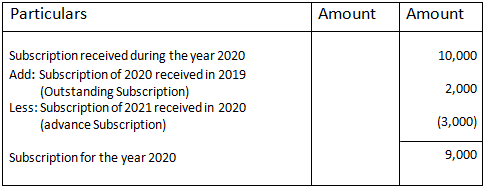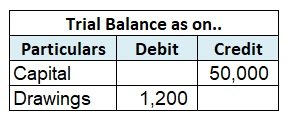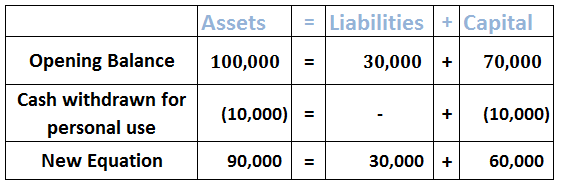Personal Accounts: The accounts of persons, firms, companies, etc. are personal accounts. There is a further classification to personal accounts- Accounts of Natural Persons: The transactions relating to individual human beings fall under this category. For Example, accounts of Joseph, Richard, MorrRead more
Personal Accounts: The accounts of persons, firms, companies, etc. are personal accounts. There is a further classification to personal accounts-
- Accounts of Natural Persons: The transactions relating to individual human beings fall under this category. For Example, accounts of Joseph, Richard, Morris, etc.
- Accounts of Artificial Persons: The transactions relating to firms, organizations, companies, institutions, associations, etc. fall under this category. For Example, Oil India Ltd, Symbiosis college, Assam Tea company, etc.
- Representative Personal Accounts: The transactions relating to certain person or a group of persons, although the name of the concerned person or persons are not mentioned in the account head, such types of accounts come under this head. Such type of accounts generally include outstanding accounts or prepaid accounts. For Example, accounts like wages outstanding, outstanding salary, commission received in advance, salary prepaid, etc.
Note: When any Prefix or Suffix is used before/ after any nominal account head, such account is classified as Representative personal account under traditional approach.
For Example, Salary A/c is a nominal account whereas salary outstanding A/c is a personal account as the word outstanding is being used as a prefix to Salary A/c.
The Accounting rule for Personal Account is –
Debit the Receiver of the benefit.
Credit the Giver of the benefit.
Real Account: The transactions relating to tangible things i.e. the things that can be seen, touched and physically exchanged and the intangible things that cannot be seen, touched but the presence can be felt comes under this category. For Example, tangible things like Cash, goods, building, machinery, etc. and intangible things like goodwill, patent, trademarks, etc.
The Accounting rule for Real Account is –
Debit what comes in.
Credit what goes out.
Nominal Accounts: The transactions relating to losses, expenses, incomes and gains comes under this category. For Example, Rent paid, wages paid, commission received, interest paid/ received, etc.
The Accounting rule for Nominal Account is –
Debit Expenses and Losses.
Credit Gains and Incomes.
Some Common Examples under the three heads are














The entry for a loan (taken for any purpose) and a car loan are quite different. When you take a bank loan, you'll receive the money from the bank and subsequently, you'll start paying interest on it. In the case of a car loan, you don't receive the money from the bank. Once the car has been purchasRead more
The entry for a loan (taken for any purpose) and a car loan are quite different. When you take a bank loan, you’ll receive the money from the bank and subsequently, you’ll start paying interest on it.
In the case of a car loan, you don’t receive the money from the bank. Once the car has been purchased you’ll make the down payment and the remaining amount will be paid by the bank on your behalf. This car loan should then be paid to the bank in installments.
The following journal entry is posted to record the car loan taken for office use:
Car A/c is debited as there is an increase in the asset. Bank A/c is credited as the down payment for the car is made which reduces the assets. Car Loan A/c is credited as it increases liability.
The following entry is recorded for the repayment of the loan (first installment) to the bank.
Let me explain this with an example,
Kumar purchased a car for 25,00,000 for his office use. He made a down payment of 2,00,000 and took a car loan from HDFC Bank for 23,00,000. The following entry will be made to record this transaction.
See less